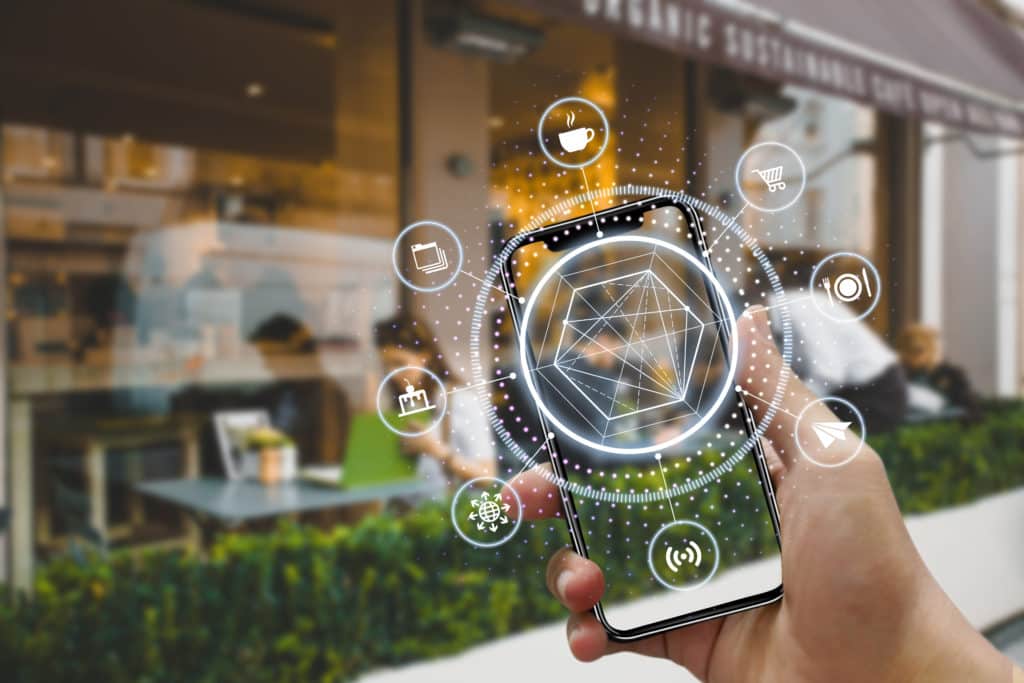This article was written by John Moody for QSR.
Most technologies are scalable to fit operators of all sizes, from single restaurants to franchises and large enterprises.
Over 10 percent of U.S. restaurants have permanently closed across the nation in the last two years, a direct result of the pandemic. By adapting outside of the traditional management, accounting and ordering methods, restaurant operators can improve their profit margins and stay afloat amid inflationary times.
There are two primary ways operators can improve profit margins: increasing sales or decreasing expenses. While increasing sales volume is a clear way to boost revenue, streamlining practices is also a huge factor in raising the bottom line. A restaurant’s profit margin can be influenced by food and inventory trends, its geographic location, the state of the broader economy, and a wide range of other factors. A good rule of thumb for restaurant profit is 30/30/30/10: 30 percent cost of goods sold, 30 percent labor, 30 percent costs, and 10 percent profit.
Recently, restaurant management technologies have become more diverse than ever, making it easier to boost profit margins by increasing the company’s level of performance and efficiency. Even better? Most technologies are scalable to fit operators of all sizes, from single restaurants to franchises and large enterprises.
Operating a successful restaurant requires owners and managers to not only focus on managing day-to-day operations but also to evaluate ways to reduce costs and grow future sales. Below are examples of how smart technologies can boost a restaurant’s profitability.
Explore cloud-based systems
Restaurateurs still using an old-school point-of-sale system are missing opportunities to streamline operations. Cloud-based POS systems store data in the cloud, so making it accessible from anywhere with internet access. These systems can support mobile devices that send orders directly from the table to the kitchen with the potential to improve turn time. Advanced POS technologies are critical for a restaurant business to thrive in an increasingly competitive marketplace.
Optimize labor
Restaurant technology innovations can help to streamline restaurant labor costs—one of the largest yet most controllable expenses. Restaurant scheduling software, based on forecasting and sales-per-labor-hour percentage goals, can help management teams optimize labor hours while saving time and energy. Restaurant technology such as a mobile app has the potential to serve as a single point of contact for shift requests and company-wide messaging, boosting employee engagement.
Improve forecasting
Forecasting for restaurants helps operators get the most out of the data available to them, both in day-to-day decisions and long-term planning. For the restaurant owners and operators always thinking two steps ahead, forecasting sales can be a key tool for meeting future challenges. Actual sales will not perfectly line up with a sales forecast every day, which means sales won’t always match one’s labor matrix. By using managerial restaurant industry experience and up-to-date restaurant reporting to smooth out forecasts, managers can adjust in real-time to stay close to optimal labor, through tools like breaks, cuts, and call-ins.
Digitize scheduling
Utilizing employee scheduling software can help streamline labor costs while still maintaining the best experience possible for guests.
A central labor dashboard can empower scheduling managers to make schedules faster with templates and centralized shift request information from employees. Restaurant owners and operators can add custom labor models and labor metric goals by location. A labor tool can also provide solutions like overtime monitoring or actual-versus-scheduled labor cost restaurant reporting.
Create a more profitable menu
Restaurant menu engineering leverages data regarding the profitability versus popularity of individual restaurant menu items. Using restaurant operations software to automate data collection for the menu engineering process makes trends easy to visualize. Automating the process also allows a business to see detailed sales analysis, and even track it through to server performance. Menu engineering is most effective when the restaurant has an accurate, up-to-date picture of each menu item’s contribution margin and sales record.
Build a following with customer-facing technology
Many customers expect a seamless and engaging technology experience, and they may stop patronizing a restaurant when a competing business can meet those demands. Encourage repeat guests by embracing technology that gives patrons an elevated experience through contactless payment, digital menus, mobile ordering apps, and loyalty software.
Increase employee retention
Recruiting and training new employees is expensive. Restaurant employee apps impact how staff communicates, strengthen company culture, and increase employee retention. Whether a restaurant is announcing changes or celebrating achievements, an employee app can be a tool for engaging staff and making employees feel invested. Employees are already looking at their phones frequently, so take advantage of the opportunity to develop your positive company culture.
Technology is expanding rapidly, and it has strong potential to make an impact on the profitability of a restaurant. No matter a restaurant’s growth trajectory, there will always be another valuable technological feature to help it profit and grow.



